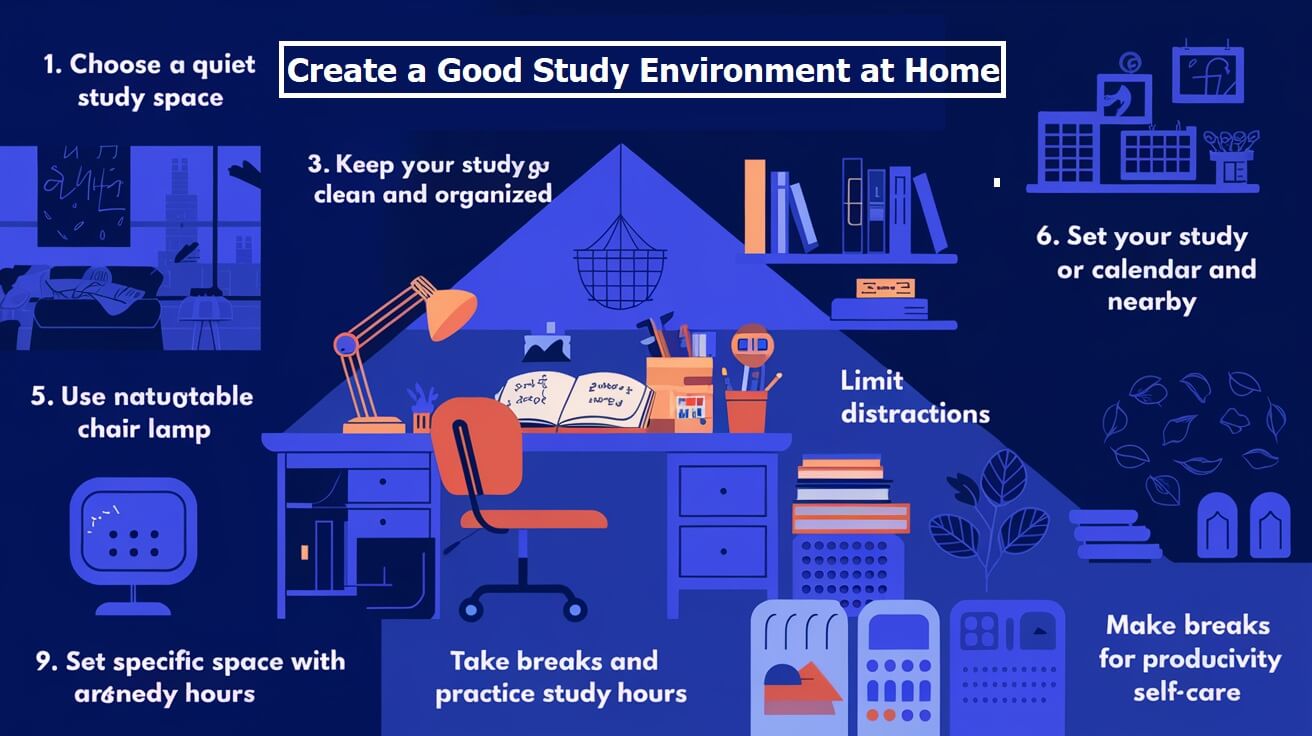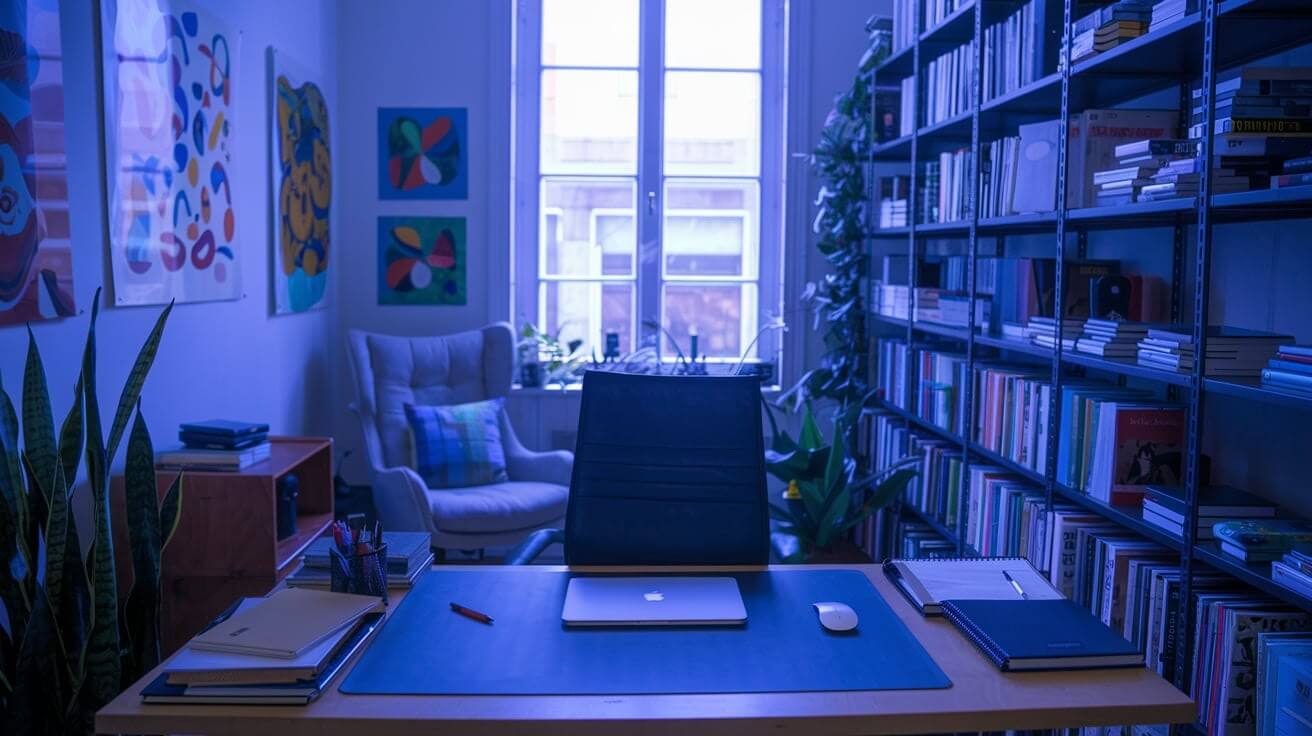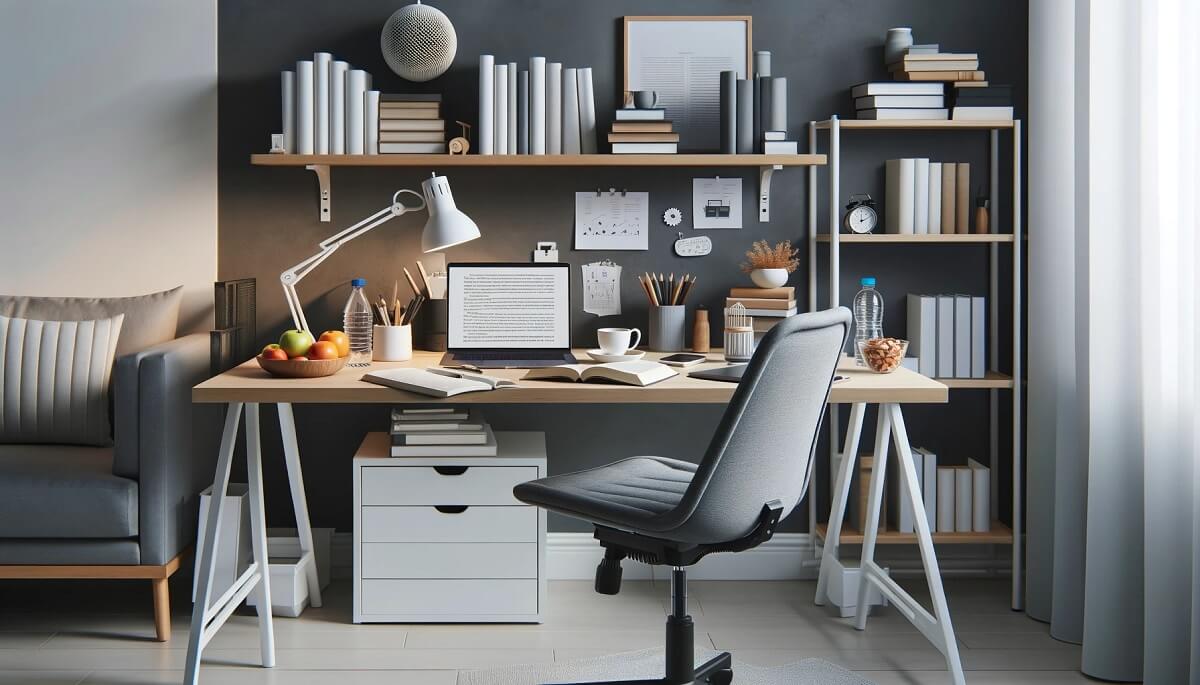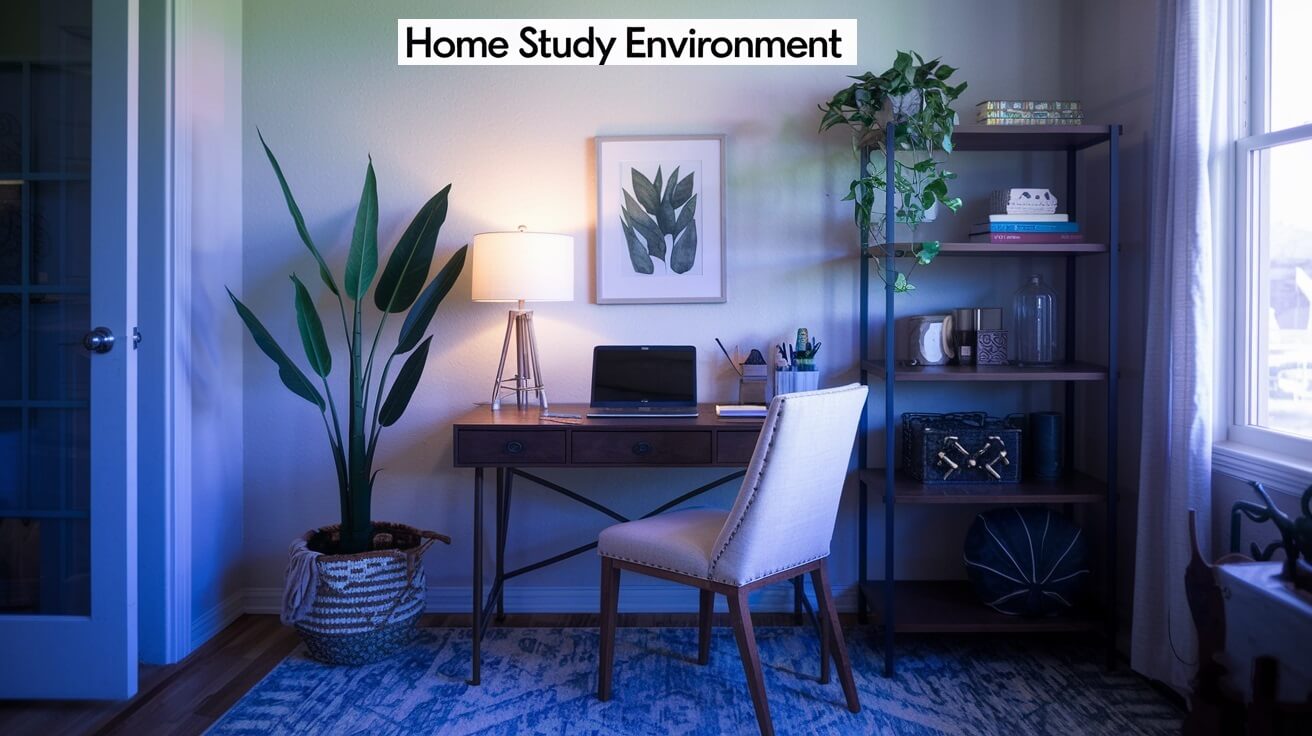
10 Tips to Create a Good Study Environment at Home: Boost your focus and productivity with a well-designed study space.
Do you often find it hard to focus when studying at home? If so, you're not alone. Many need help maintaining concentration amidst household distractions, making it difficult to absorb information effectively. But what if you could transform your home into the ideal study sanctuary? A good study environment can significantly enhance your focus, helping you retain information and complete tasks more efficiently.
In this blog, we'll share ten practical tips to help you create a study space at home that maximizes productivity. From decluttering your desk to managing noise, these strategies will guide you in setting up a space where you can genuinely thrive academically. Let's dive in and turn your study sessions into productive power hours!
Why a Good Study Environment Matters
Creating a conducive study environment is more than just having a clean desk—it's about setting up a space that supports focus and minimizes distractions. Studies show that a well-organized study space can increase productivity by up to 20%, reduce stress, and improve overall academic performance. Following these tips can create a space that keeps you motivated and on track.
Tip 1: Declutter Your Space for a Clear Mind
A clutter-free desk is a clutter-free mind. Disorganization can be a significant distraction when studying. Start by removing any non-essential items from your study area. Use storage solutions like drawers, baskets, and shelves to tidy your space.
- Actionable Step: Dedicate 10 minutes each day to clearing your desk.
- Pro Tip: Use labeled folders to organize papers and keep your study materials accessible.
Example:
Imagine trying to focus on a math problem but constantly getting distracted by a pile of papers or last night's coffee cup on your desk. By keeping your space clear, you can concentrate better and study more efficiently.
Tip 2: Invest in Good Lighting
Good lighting is essential for maintaining focus during study sessions. Natural light boosts mood and alertness, making it the best choice for a study space. But if natural light is limited, consider a desk lamp with adjustable brightness.
- Natural Light: Position your desk near a window to maximize daylight.
- Artificial Light: Choose a warm LED lamp to reduce eye strain during evening study sessions.
Example:
A well-lit study space can make a difference—like reading a book in a bright café versus a dimly lit room. Proper lighting can keep you alert and focused.

Tip 3: Use Comfortable Furniture
Your study space should be comfortable enough for long sessions but not so cozy that it lulls you to sleep. Investing in an ergonomic chair and desk ensures proper posture, preventing back and neck strain.
- Essential Ergonomics: Position the top of your digital device's screen at eye level to reduce strain, and ensure that your feet are placed flat on the ground or supported by a footrest for comfort.
- Furniture suggestions: Adjustable chairs with lumbar support and desks that suit your height.
Example:
Concentrating is much easier when you're sitting comfortably. A supportive chair can differentiate between a productive study session and constant backaches.
Tip 4: Personalize Your Study Area

A study space should feel inviting, not sterile. Adding personal touches can make it where you want to spend time. Decorate with motivational quotes, photos, or a small plant to create a space that inspires you.
- Personalization Tips: Use calming colors like blue and green, which are known for their focus-enhancing qualities.
- Plants for Productivity: Studies suggest peace lilies and snake plants can improve air quality and create a calming atmosphere.
Example:
Imagine studying in a space that feels like you. A few personal touches can turn a dull corner into a space that motivates and refreshes you.
Tip 5: Manage Noise Levels
Noise can be a significant distraction, but there are ways to manage it. Whether you live in a bustling household or near a noisy street, there are strategies you can use to keep your space quiet.
- Noise-Canceling Headphones: Ideal for blocking out background sounds.
- White Noise Machines: These can create a steady sound that masks more disruptive noises.
- Quiet Study Spot: Set up your study area in the quietest corner of your home.
Example:
Can't control the noise around you? Noise-canceling headphones might become your best investment, creating a bubble of concentration wherever you are.
Tip 6: Organize Your Study Materials
Everything you need within reach keeps you in the zone, minimizing the need to get up frequently. Organize your study materials neatly on your desk or nearby shelves.
- Actionable Step: Use drawer dividers and desk organizers to keep essentials like pens, notebooks, and highlighters at hand.
- Digital Organization: If you use digital notes, categorize them into folders on your computer or use apps like Evernote for easy access.
Example:
An organized space can save you time and keep you focused. Just imagine not having to dig through piles of paper to find your notes—a small change makes a big difference.

Tip 7: Incorporate plants for fresh air.
Plants brighten your study area and help purify the air, creating a healthier environment. Research indicates that greenery can help lower stress levels and enhance productivity.
- Best Plants for Study Spaces: Snake plants, peace lilies, and spider plants are low-maintenance options that can help enhance air quality.
- Placement Tips: Place a small plant on your desk or near your study space for a touch of nature.
Example:
Think of how relaxing studying in a garden or a park is. Adding a plant to your study space can bring some tranquility indoors.
Tip 8: Create a consistent study routine.
A consistent study routine helps signal your brain that it's time to focus. Studying at the same time and place daily can help you get into the study zone faster.
- How to Build a Routine: Set specific study hours and take regular breaks using the Pomodoro Technique (25 minutes of study, then a 5-minute break).
- Benefits of Consistency: Routines reduce procrastination and make it easier to start studying.
Example:
Just like brushing your teeth at the same time every morning becomes a habit, studying in the same space can become second nature.
Tip 9: Use ergonomic accessories
Ergonomic accessories like wrist rests, monitor stands, and footrests can make your study sessions more comfortable. These minor adjustments can prevent strain and fatigue during long study hours.
- Recommended Accessories: Use a monitor riser to keep your screen at eye level and a wrist rest to support your hands during typing.
- Why It Matters: Ergonomic tools help you maintain excellent posture, reduce the risk of discomfort, and improve focus.
Example:
A simple wrist rest can prevent wrist strain, making long hours of note-taking much more comfortable.
Tip 10: Maintain a Distraction-Free Zone
Distractions are everywhere—phones, social media, household noise. A dedicated, distraction-free study space can make all the difference in your ability to focus.
- How to Minimize Distractions: Keep your phone in another room or use apps that block social media during study time.
- Designate a Study-Only Space: Choose an area in your home where you only study. This helps your mind associate the space with focus and learning.
Example:
Imagine how much more you could accomplish without the constant ping of notifications. A distraction-free space allows you to dive deeper into your work.
Conclusion: Create Your Ideal Study Space Today.
A productive study environment can be inexpensive and inexpensive to set up. By following these ten tips—like organizing your space, managing noise, and adding personal touches—you can create a study area that helps you focus and achieve your academic goals.
Ready to make a change? Implement these tips and gradually build a space that suits your needs. A little effort goes a long way in creating an environment where you can thrive. Happy studying!
FAQs:
1. How can I reduce distractions while studying at home?
To reduce distractions:
- Start by creating a dedicated study space in a quiet area of your home.
- You can use noise-canceling headphones or white noise machines to block out background sounds.
- Place your phone and other electronic devices on silent or out of reach, and consider using apps that block access to social media during study sessions.
Establishing clear boundaries with family members or roommates can help reduce interruptions.
2. What is the best lighting for a study room?
Natural light is the best option for a study room, as it boosts mood and helps maintain alertness. Position your desk near a window to take advantage of daylight. If natural light is limited, use a warm LED desk lamp with adjustable brightness to reduce eye strain. Task-lighting, a reading lamp, can be helpful for focused activities like reading or writing.
3. How do I organize my study desk?
Start by keeping only essential items on your desk, such as your computer, notebooks, and a few pens. Use storage solutions like drawer dividers and desk organizers to keep smaller items neatly arranged. Label folders for different subjects or projects to make it easy to find what you need. Regularly declutter your desk to maintain a clean and focused workspace.
4. What colors are best for a study environment?
Green and blue are excellent color choices for a study environment, as they promote focus and foster a calming ambiance. Blue is perfect for improving concentration, while green can reduce eye strain. Light shades of yellow can boost energy and positivity if you prefer warmer tones. Use these colors as accents in your study space through paint, décor, or stationery.
5. How can I improve concentration in my study area?
To improve concentration:
- Ensure your study space is comfortable and free of distractions.
- Keep your desk organized and clutter-free, and use ergonomic furniture to maintain good posture.
- Work in the same space at the same time each day to create a consistent study routine. This signals to your brain that it's time to focus.
Additionally, a timer like the Pomodoro Technique can help you maintain focus and take regular breaks.
Study Tips Students

